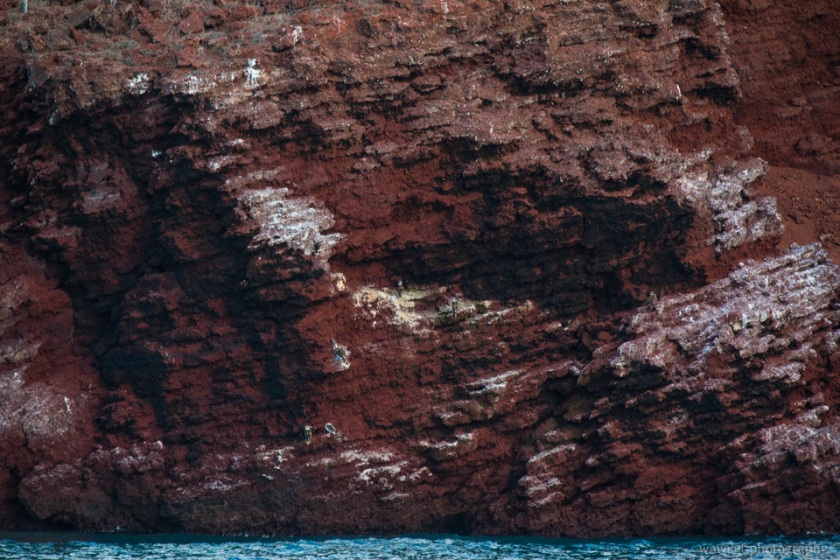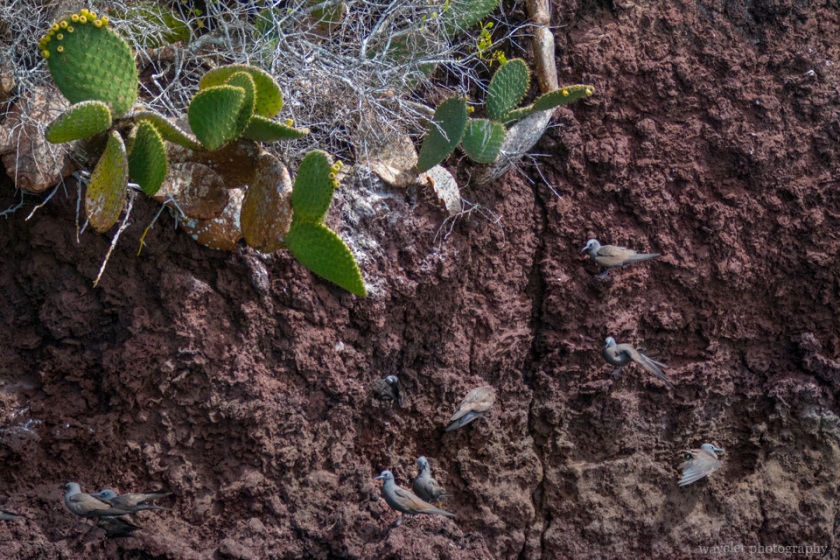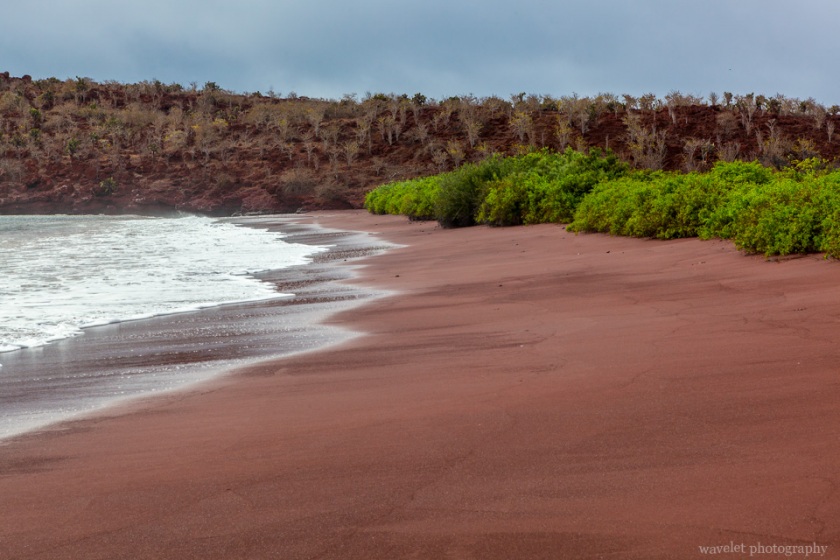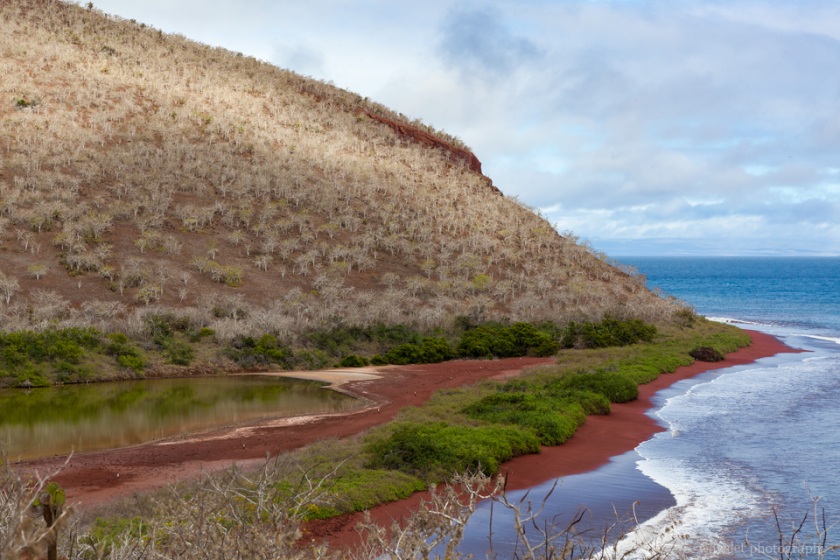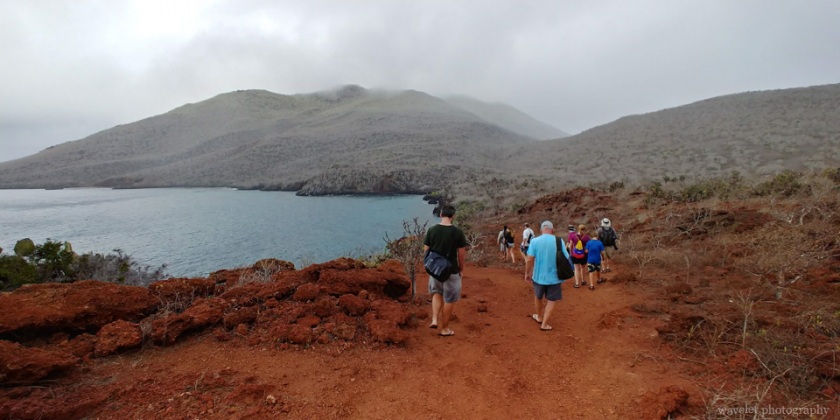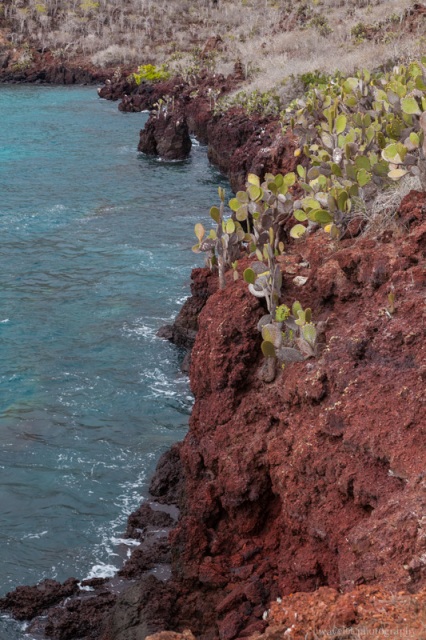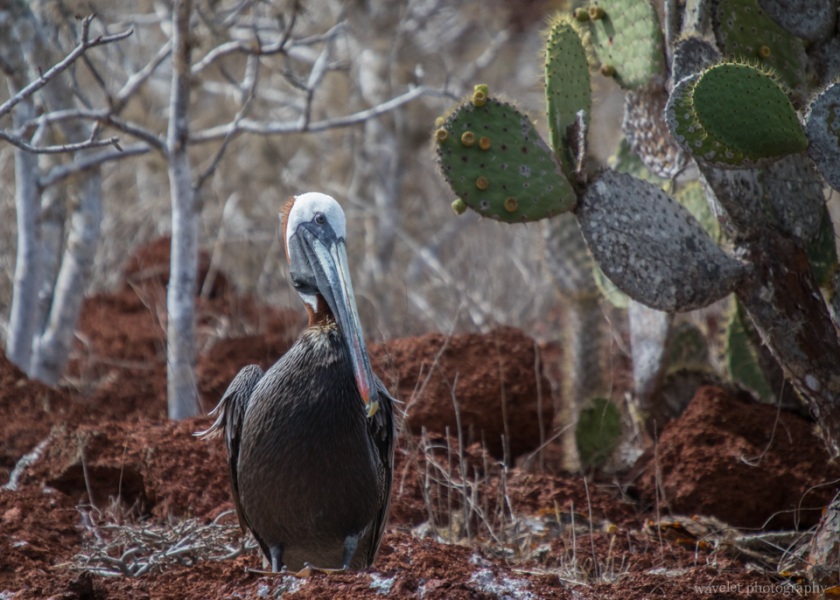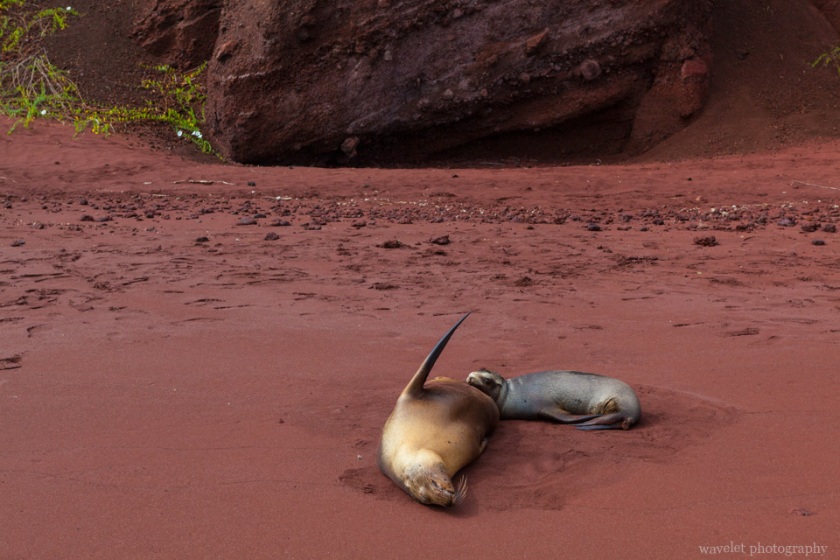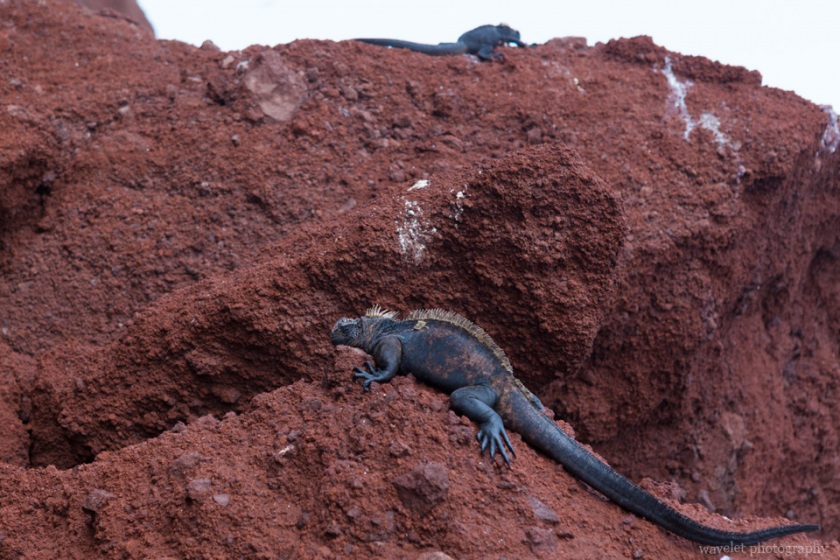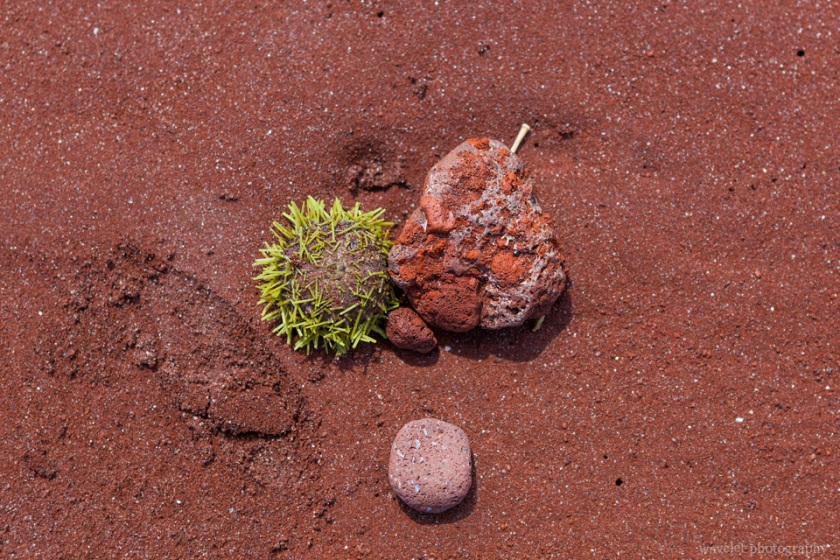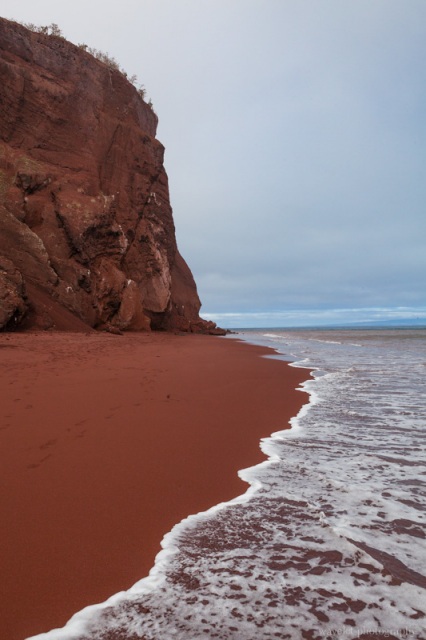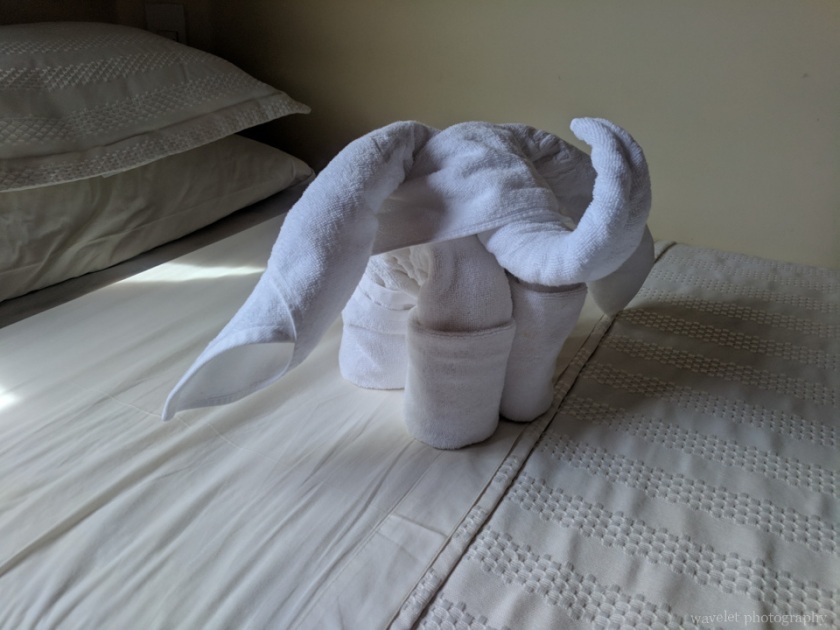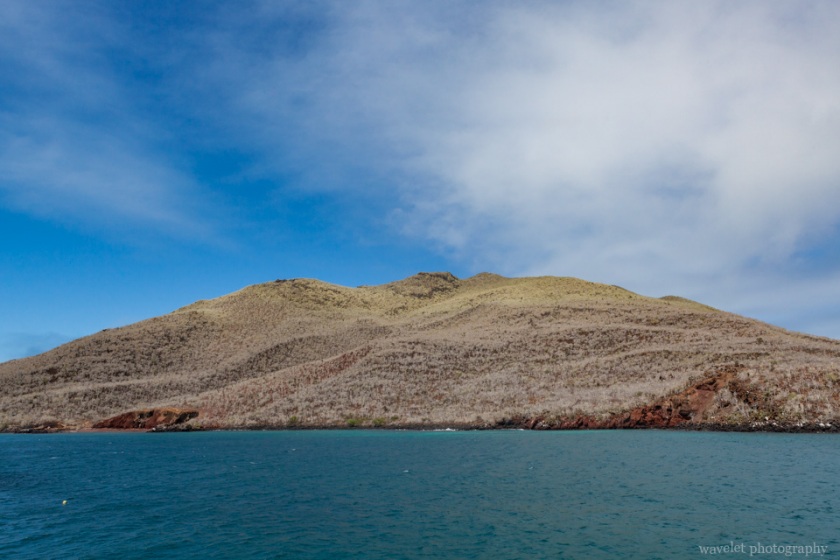2018.7.4
Rábida island is located less 3 miles to the south of Santiago island. The island is small in size and rich in volcanic activity patterns. Almost the entire perimeter of the island are volcanic cliffs, and only the beach on the north is suitable for visitors to land.
The lava from several volcanoes on Rábida island is rich in iron, which gives the island its distinctive reddish-brown hue. Near the landing site, the red cliffs are home to nesting Blue-footed boobies.
The most unique feature of Rábida island is its fine red sand beach. The white waves lap up against the red sand, a beauty that would be ranked on the top among all the beaches of the world.
The sky was clearing somewhat as we climbed the hill to the right of the beach. From here you can clearly see the lagoon behind the beach. The hill is also full of Palo Santo trees.
As we walked along the path up the hill, it started raining for a while. The red volcanic rocks along the coast were covered with patches of Prickly Pear Cactus, which Marco said they looked like the ears of Mickey Mouse.
The walkable trails on Rábida Island are not very long. We turned back to the beach in 30 minutes. The beach continues around the hillside. There are sea lions and marine iguanas lying on the beach. Pelicans are nesting on the shore and this is a great place to see them up close.
The distinctive red sand beach always adds a charm to the landscape. At the end of the beach is a towering cliff, as if the world ends here.
The last thing I have to say is the crew who cleaned our room. Every time we came back from landing, not only were the beds neatly cleaned, but the crew also folded towels into various animal shapes, which shows the crew’s dedication and enthusiasm for their work.
We left Rábida Island before lunch. Our next stop is Sombrero Chino.
